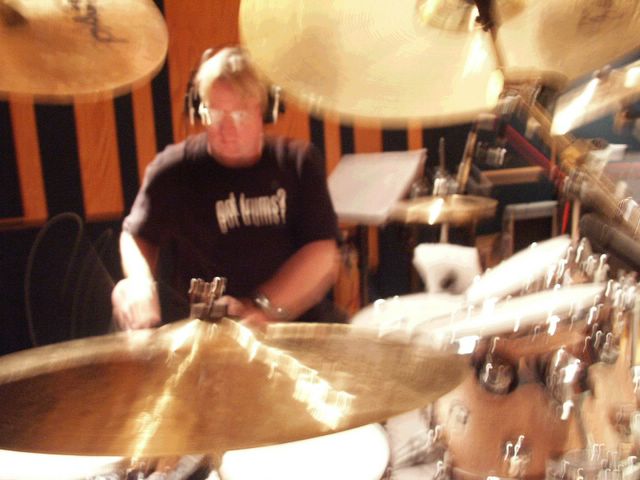Meditating On Contemplative/Centering Prayer

Meditating On Contemplative/Centering Prayer
By Ken Silva
Although I have been addressing other topics within the Emergent Church it seems best in the Lord to stop and contemplate the subject of mediation a little further. So in this work I begin to attack an argument that is becoming the norm as we expose the misguided mysticism at the rotten root of new evangelicalism, of which the EC is a key component. Like a lightening rod the topic of mediation has brought attention down on my work here at Apprising Ministries; undoubtedly we have hit a nerve.
Now the argument presented in favor of this “spiritual discipline/practice” is actually two-pronged in that it is usually stated 1) the practice of Contemplative/Centering prayer is consistent with meditation in the Bible, and 2) this discipline is not like that practiced in Eastern religions. Since the Bible says – A wise man attacks the city of the mighty and pulls down the stronghold in which they trust, [1] it is this second prong we will be pulling down as this develops.
Equivocation About Meditation
First let me very clearly point out that no one critical of the practice of meditation is talking about the proper contemplation upon the texts of the Bible as we read. In no uncertain terms we are commanded by God the Holy Spirit to do exactly that in the Scriptures He wrote. Richard Foster himself brings this to our attention in his book Celebration of Discipline (COD). While discussing “The Discipline of Meditation” Foster writes:
Repentance and obedience are essential features in any biblical understanding of meditation. The psalmist exclaims, “Oh, how I love thy law! It is my meditation all the day…. I hold my feet from every way, in order to keep thy word”… It is this continual focus upon obedience and faithfulness that most clearly distinguishes Christian meditation from its Eastern and secular counterparts. [2]
And just how do we know that this so-called “Christian meditation” is distinguished “from its Eastern and secular counterparts”? Well, because Foster says it is, that’s why. Here we begin to see that we are caught up in circular reasoning with this “discipline of meditation.” Wrested from its proper biblical context “meditation” is now forced into an artificial category called “contemplation.” However, in his book The Sacred Way (SW) even Emergent theologian Tony Jones admits this type of contemplative spirituality originates in the monastic traditions of “the Desert Fathers.” [3]
Merton On A True Monk
The above is also confirmed by Thomas Merton in his book The Silent Life (TSL). As a matter of fact I got this book because it is recommended by Jones in SW and is specifically devoted to this very subject. At this point it becomes critical for the reader to understand that Merton is universally quoted as an authority on contemplative practices. Take for example the following from the book Peace Is Every Step (PIES) by Thich Nhat Hanh, who is a “[w]orld-renowned Zen master.” [4] Hanh, by the way, also happens to be yet another member of the Living Spiritual Teachers Project.
In the “Editor’s Introduction” to PIES we read:
When Thomas Merton, the well-known Catholic monk and mystic, met Thich Nhat Hanh at his monastery, Gethsemani,… [Merton] told his students, “Just the way [Hanh] opens the door and enters a room demonstrates his understanding. He is a true monk. [5]
Further we are told that “Merton went on to write an essay, “Nhat Hanh Is My Brother,…” [6] Men and women, the fact that this information is included in a book by a Zen master, which also has a foreword by H.H. the Dali Lama speaks volumes about where Merton’s mysticism ultimately led him. As we turn to his book TSL, let’s also keep in mind that Merton pronounced practicing Buddhist Hanh “a true monk.” But most unfortunately for those who use the heretical Merton as a source for the practice of meditation, he gives us a clear definition of what a monk is.
In TSL Merton informs us that a “monk is a man who has been called by the Holy Spirit” who is to “devote his entire life to seeking God.” [7] So now we would have to consider Merton’s “brother” Nhat Hanh, a Zen Buddhist master, as “a man who has been called by the Holy Spirit” in order to “devote his entire life to seeking God” through this pagan religion. This is a little hard to swallow. And if this isn’t enough to help you see the warning flags of deepest scarlet, then consider also that Merton says the monastic tradition teaches that the monk:
travels to God by the direct path, recto tramite. He withdraws from “the world.” He gives himself entirely to prayer, meditation, study, labor, penance, under the eyes of God. The monk is distinguished even from other religious vocations by the fact that he is essentially and exclusively dedicated to seeking God, rather than seeking souls for God. [8]
But Beelzebub’s “fly in the ointment” here is the fact that this monastic system which gave birth to these contemplative practices clearly develops a couple of centuries after the Apostles and actually runs counter to what Christ Himself said He was sending His Church to do. Although one is free to make whatever dubious choices they wish, the monastic tradition of hiding one’s self away from the world is in direct opposition to what Jesus tells His servants we are to do. We look at this a little further next time.
[1] Proverbs 21:22.
[2] Richard Foster, Celebration of Discipline, (HarperCollins, 1998), pp. 15,16, emphasis mine.
[3] Tony Jones, The Sacred Way, (Zondervan, 2005), p. 70.
[4] Thich Nhat Hanh, Peace Is Every Step, (Bantam, 1992), back cover.
[5] Ibid., p. xi.
[6] Ibid.
[7] Thomas Merton, The Silent Life, (Farrar, Straus and Giroux, 1957), p. vii, emphasis mine.
[8] Ibid., viii., emphasis mine



0 Comments:
Post a Comment
<< Home